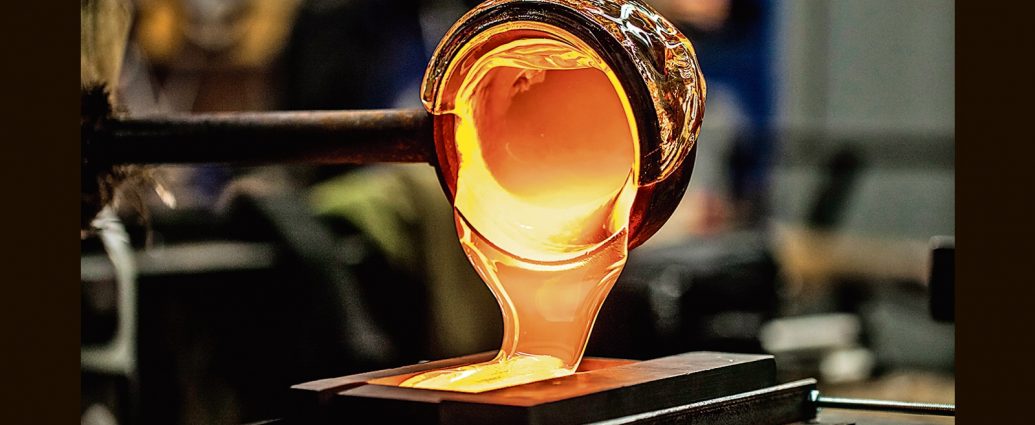One of the early catalysts for the development of studio glass was Harvey K Littleton, a teaching ceramist at the University of Wisconsin in Madison, who started experimenting with hot glass in his studio in 1958.
He realised his desire to develop a studio glass practice in America could become a reality after encountering the small glasshouses of Italy.
Littleton joined forces with the Toledo Museum of Art in Ohio, considered the birthplace of the American studio glass movement. There, Littleton worked with glass research scientist Dominick Labino, who successfully devised a small, relatively inexpensive furnace in which glass could be melted and worked, making it affordable and possible for the first time for artists to blow glass in independent studios.
Although artists were already fusing glass in small studio kilns, hot glassworking techniques such as glassblowing and glass sculpting required factory facilities. Littleton and Labino’s secret was the small furnace, and a mix with a low melting-point, which Labino supplied.
Littleton went on to start a glass programme in the ceramics department at the University of Wisconsin in Madison. He and the students he mentored there would lay the foundations of the studio glass movement.
Some of his early students were Dale Chihuly, Marvin Lipofsky and Fritz Dreisbach. Lipofsky started glass programmes at the University of California at Berkeley and at the California College of Arts and Crafts in Oakland in the 1960s. Dale Chihuly became an internationally renowned artist and went to head the glass department at the Rhode Island School of Design from 1969 to 1980.
Later American studio glass artists would gradually shift their attention to technique in the late 1960s, looking for guidance to countries famous for their glassworking expertise, specifically Italy, Sweden and then-Czechoslovakia.
It was Chihuly who would bring to America one of the greatest known Italian glass blowers: Lino Tagliapietra, and his Muranese glassblowing secrets.
In 1979, Tagliapietra, who didn’t speak English, accepted an invitation to teach at Chihuly’s new Pilchuck Glass School near Seattle. Aside from the language barrier, there were traditional limits to sharing technical information outside of Venice and Murano. While numerous artists travelled as ambassadors of Venetian glass-blowing over the centuries, they were expected to demonstrate their skills and then return without overly disseminating the trade secrets.
Knowing all this, Tagliapietra came to the US wanting to contribute to the rising international interest in studio glass. He shared his secrets, contributing to the boom.
Today, American glass artists who studied at institutes that gained from the legacy he helped create are coming to India to pay it forward.
Enjoy unlimited digital access with HT Premium
Subscribe Now to continue reading
